Cracking during High-Temperature Deformation of a High-Strength Polycrystalline CoNi-Base Superalloy
Abstract
:1. Introduction
2. Materials and Methods
2.1. Observations during Hot Rolling
2.2. Experimental Methods
3. Results
3.1. Initial Homogenized Condition
3.2. Mechanical Properties during High Temperature Deformation
3.3. Cracking during High-Temperature Deformation
3.4. Oxidation
3.5. Neutron Scattering Measurements around the γ′ Solvus Temperature
4. Discussion
5. Conclusions
- CoWAlloy1 has a high strength and a limited formability below the γ′ solvus temperature;
- Cracking and a highly deformed microstructure occur at lower deformation temperatures, while recrystallization and no cracking occurs at higher deformation temperatures that are above that of the γ′ solvus temperature;
- Precipitation of the hardening γ′ phase is responsible for the high strength and cracking susceptibility;
- Stronger oxidized surfaces at a higher pre-heating temperature seem to lead to more cracking;
- SANS reveals a γ′ precipitate radius of about 14 nm for the secondary precipitates and 3 nm for the tertiary precipitates and a total volume fraction of about 62% after cooling down from 1075 °C to 750 °C;
- The combination of different analytical methods optimized on various length scales provides the understanding of the deformation mechanism and possible cracking.
Supplementary Materials
Author Contributions
Funding
Institutional Review Board Statement
Informed Consent Statement
Data Availability Statement
Acknowledgments
Conflicts of Interest
References
- Monajati, H.; Taheri, A.K.; Jahazi, M.; Yue, S. Deformation Characteristics of Isothermally Forged UDIMET 720 Nickel-Base Superalloy. Metall. Mat. Trans. A 2005, 36, 895–905. [Google Scholar] [CrossRef]
- Park, N.K.; Kim, I.S.; Na, Y.S.; Yeom, J.T. Hot Forging of a Nickel-Base Superalloy. J. Mater. Process. Technol. 2001, 111, 98–102. [Google Scholar] [CrossRef]
- Guo, S.; Li, D.; Guo, Q.; Wu, Z.; Peng, H.; Hu, J. Investigation on Hot Workability Characteristics of Inconel 625 Superalloy Using Processing Maps. J. Mater. Sci. 2012, 47, 5867–5878. [Google Scholar] [CrossRef]
- Xu, W.; Zhang, L.; Gu, S.; Zhang, J. Hot Compressive Deformation Behavior and Microstructure Evolution of HIPed FGH96 Superalloy. Trans. Nonferrous Met. Soc. China 2012, 22, 66–71. [Google Scholar] [CrossRef]
- Devaux, A.; Georges, E.; Héritier, P. Development of New C&W Superalloys for High Temperature Disk Applications. AMR 2011, 278, 405–410. [Google Scholar] [CrossRef]
- Devaux, A.; Picque, B.; Gervais, M.; Georges, E.; Poulain, T.; Heritier, P. AD730TM-A New Nickel-Based Superalloy for High Temperature Engine Rotative Parts. In Proceedings of the Superalloys 2012 Twelfth International Symposium, Champion, PA, USA, 9–13 September 2012; John Wiley & Sons, Inc.: Hoboken, NJ, USA, 2012; pp. 911–919. [Google Scholar]
- Fedorova, T.; Rösler, J.; Klöwer, J.; Gehrmann, B. Development of a New 718-Type Ni-Co Superalloy Family for High Temperature Applications at 750 °C. MATEC Web Conf. 2014, 14, 01003. [Google Scholar] [CrossRef]
- Bergner, M.; Rösler, J.; Gehrmann, B.; Klöwer, J. Effect of Heat Treatment on Microstructure and Mechanical Properties of VDM Alloy 780 Premium. In Proceedings of the 9th International Symposium on Superalloy 718 & Derivatives: Energy, Aerospace, and Industrial Applications; Ott, E., Liu, X., Andersson, J., Bi, Z., Bockenstedt, K., Dempster, I., Groh, J., Heck, K., Jablonski, P., Kaplan, M., et al., Eds.; The Minerals, Metals & Materials Series; Springer International Publishing: Cham, Switzerland, 2018; pp. 489–499. ISBN 978-3-319-89479-9. [Google Scholar]
- Kümmel, F.; Kirchmayer, A.; Solís, C.; Hofmann, M.; Neumeier, S.; Gilles, R. Deformation Mechanisms in Ni-Based Superalloys at Room and Elevated Temperatures Studied by In Situ Neutron Diffraction and Electron Microscopy. Metals 2021, 11, 719. [Google Scholar] [CrossRef]
- Lass, E.A.; Williams, M.E.; Campbell, C.E.; Moon, K.-W.; Kattner, U.R. γ′ Phase Stability and Phase Equilibrium in Ternary Co-Al-W at 900 °C. J. Phase Equilib. Diffus. 2014, 35, 711–723. [Google Scholar] [CrossRef]
- Knop, M.; Mulvey, P.; Ismail, F.; Radecka, A.; Rahman, K.M.; Lindley, T.C.; Shollock, B.A.; Hardy, M.C.; Moody, M.P.; Martin, T.L.; et al. A New Polycrystalline Co-Ni Superalloy. JOM 2014, 66, 2495–2501. [Google Scholar] [CrossRef]
- Neumeier, S.; Freund, L.P.; Göken, M. Novel Wrought γ/γ′ Cobalt Base Superalloys with High Strength and Improved Oxidation Resistance. Scr. Mater. 2015, 109, 104–107. [Google Scholar] [CrossRef]
- Titus, M.S.; Eggeler, Y.M.; Suzuki, A.; Pollock, T.M. Creep-Induced Planar Defects in L12-Containing Co- and CoNi-Base Single-Crystal Superalloys. Acta Mater. 2015, 82, 530–539. [Google Scholar] [CrossRef]
- Sani, S.A.; Arabi, H.; Kheirandish, S.; Ebrahimi, G. Investigation on the Homogenization Treatment and Element Segregation on the Microstructure of a γ/γ′-Cobalt-Based Superalloy. Int. J. Min. Met. Mater 2019, 26, 222–233. [Google Scholar] [CrossRef]
- Freund, L.P.; Giese, S.; Schwimmer, D.; Höppel, H.W.; Neumeier, S.; Göken, M. High Temperature Properties and Fatigue Strength of Novel Wrought γ/γ′ Co-Base Superalloys. J. Mater. Res. 2017, 32, 4475–4482. [Google Scholar] [CrossRef]
- Freund, L.P.; Stark, A.; Pyczak, F.; Schell, N.; Göken, M.; Neumeier, S. The Grain Boundary Pinning Effect of the μ Phase in an Advanced Polycrystalline γ/γ′ Co-Base Superalloy. J. Alloys Compd. 2018, 753, 333–342. [Google Scholar] [CrossRef]
- Churyumov, A.Y.; Medvedeva, S.V.; Mamzurina, O.I.; Kazakova, A.A.; Churyumova, T.A. United Approach to Modelling of the Hot Deformation Behavior, Fracture, and Microstructure Evolution of Austenitic Stainless AISI 316Ti Steel. Appl. Sci. 2021, 11, 3204. [Google Scholar] [CrossRef]
- Yao, D.; Cai, L.; Bao, C. A New Fracture Criterion for Ductile Materials Based on a Finite Element Aided Testing Method. Mater. Sci. Eng. A 2016, 673, 633–647. [Google Scholar] [CrossRef]
- Evans, R.W. Modelling of the Hot-Working of High Perfomance Alloys. KEM 1992, 77–78, 227–240. [Google Scholar] [CrossRef]
- Jaramillo, R.A.; Suarez, F.S.; Plyburn, J.A.; Camus, D.E. Evaluation of an Inconel Alloy 718 Microstructural Evolution Model. In Proceedings of the Superalloys 718, 625, 706 and Various Derivatives (1997), Pittsburgh, PA, USA, 15–18 June 1997; TMS: Pittsburgh, PA, USA, 1997; pp. 257–266. [Google Scholar]
- Brooks, J.W. Forging of Superalloys. Mater. Des. 2000, 21, 297–303. [Google Scholar] [CrossRef]
- Dandre, C.A.; Walsh, C.A.; Evans, R.W.; Reed, R.C.; Roberts, S.M. Microstructural Evolution of Nickel-Base Superalloy Forgings during Ingot-to-Billet Conversion: Process Modeling and Validation. In Proceedings of the Superalloys 2000 (Ninth International Symposium), Seven Springs, PA, USA, 17–21 September 2000; TMS: Pittsburgh, PA, USA, 2000; pp. 85–94. [Google Scholar]
- Zhang, H.Y.; Zhang, S.H.; Li, Z.X.; Cheng, M. Hot Die Forging Process Optimization of Superalloy IN718 Turbine Disc Using Processing Map and Finite Element Method. Proc. Inst. Mech. Eng. Part B J. Eng. Manuf. 2010, 224, 103–110. [Google Scholar] [CrossRef]
- Gilles, R.; Mukherji, D.; Eckerlebe, H.; Strunz, P.; Rösler, J. In Situ Investigation with Neutrons on the Evolution of γ′ Precipitates at High Temperatures in a Single Crystal Ni-Base Superalloy. AMR 2011, 278, 42–47. [Google Scholar] [CrossRef] [Green Version]
- Collins, D.M.; Heenan, R.K.; Stone, H.J. Characterization of Gamma Prime (γ′) Precipitates in a Polycrystalline Nickel-Base Superalloy Using Small-Angle Neutron Scattering. Metall. Mat. Trans. A 2011, 42, 49–59. [Google Scholar] [CrossRef]
- Del Genovese, D.; Rösler, J.; Strunz, P.; Mukherji, D.; Gilles, R. Microstructural Characterization of a Modified 706-Type Ni-Fe Superalloy by Small-Angle Neutron Scattering and Electron Microscopy. Metall. Mat. Trans. A 2005, 36, 3439–3450. [Google Scholar] [CrossRef]
- Mukherji, D.; Del Genovese, D.; Strunz, P.; Gilles, R.; Wiedenmann, A.; Rösler, J. Microstructural Characterisation of a Ni–Fe-Based Superalloy by in Situ Small-Angle Neutron Scattering Measurements. J. Phys. Condens. Matter 2008, 20, 104220. [Google Scholar] [CrossRef]
- Ratel, N.; Bruno, G.; Demé, B. In Situ Small-Angle Neutron Scattering Investigation of the γ′ Precipitation and Growth in the Nickel-Based Single-Crystal Alloy SC16. J. Phys. Condens. Matter 2005, 17, 7061–7075. [Google Scholar] [CrossRef]
- Hausmann, D.; Solís, C.; Freund, L.P.; Volz, N.; Heinemann, A.; Göken, M.; Gilles, R.; Neumeier, S. Enhancing the High-Temperature Strength of a Co-Base Superalloy by Optimizing the γ/γ′ Microstructure. Metals 2020, 10, 321. [Google Scholar] [CrossRef]
- Wan, Z.; Hu, L.; Sun, Y.; Wang, T.; Li, Z. Hot Deformation Behavior and Processing Workability of a Ni-Based Alloy. J. Alloys Compd. 2018, 769, 367–375. [Google Scholar] [CrossRef]
- Schneider, C.A.; Rasband, W.S.; Eliceiri, K.W. NIH Image to ImageJ: 25 Years of Image Analysis. Nat. Methods 2012, 9, 671–675. [Google Scholar] [CrossRef]
- Mühlbauer, S.; Heinemann, A.; Wilhelm, A.; Karge, L.; Ostermann, A.; Defendi, I.; Schreyer, A.; Petry, W.; Gilles, R. The New Small-Angle Neutron Scattering Instrument SANS-1 at MLZ—Characterization and First Results. Nucl. Instrum. Methods Phys. Res. Sect. A Accel. Spectrometers Detect. Assoc. Equip. 2016, 832, 297–305. [Google Scholar] [CrossRef]
- Gilles, R. How Neutrons Facilitate Research into Gas Turbines and Batteries from Development to Engineering Applications. J. Synch. Investig. 2020, 14, S69–S74. [Google Scholar] [CrossRef]
- Keiderling, U. The New “BerSANS-PC” Software for Reduction and Treatment of Small Angle Neutron Scattering Data. Appl. Phys. A Mater. Sci. Process. 2002, 74, s1455–s1457. [Google Scholar] [CrossRef]
- Breßler, I.; Kohlbrecher, J.; Thünemann, A.F. SASfit: A Tool for Small-Angle Scattering Data Analysis Using a Library of Analytical Expressions. J. Appl. Crystallogr. 2015, 48, 1587–1598. [Google Scholar] [CrossRef] [PubMed]
- Freund, L.P. Mikrostrukturelle Und Mechanische Charakterisierung von Polykristallinen Ausscheidungsgehärteten Co-Basis Superlegierungen Unter Besonderer Berücksichtigung Der Verformungsmechanismen. Ph.D. Thesis, Friedrich-Alexander-Universität Erlangen-Nürnberg, Erlangen, Germany, 2019. [Google Scholar]
- Porter, D.A.; Easterling, K.E.; Sherif, M.Y. Phase Transformations in Metals and Alloys, 3rd ed.; CRC Press: Boca Raton, FL, USA, 2009; ISBN 978-1-4200-6210-6. [Google Scholar]
- Haynes. Available online: https://www.hpalloy.com/Alloys/descriptions/HAYNES25.aspx (accessed on 16 November 2021).
- Krupp, U.; Kane, W.M.; Laird, C.; McMahon, C.J. Brittle Intergranular Fracture of a Ni-Base Superalloy at High Temperatures by Dynamic Embrittlement. Mater. Sci. Eng. A 2004, 387–389, 409–413. [Google Scholar] [CrossRef]
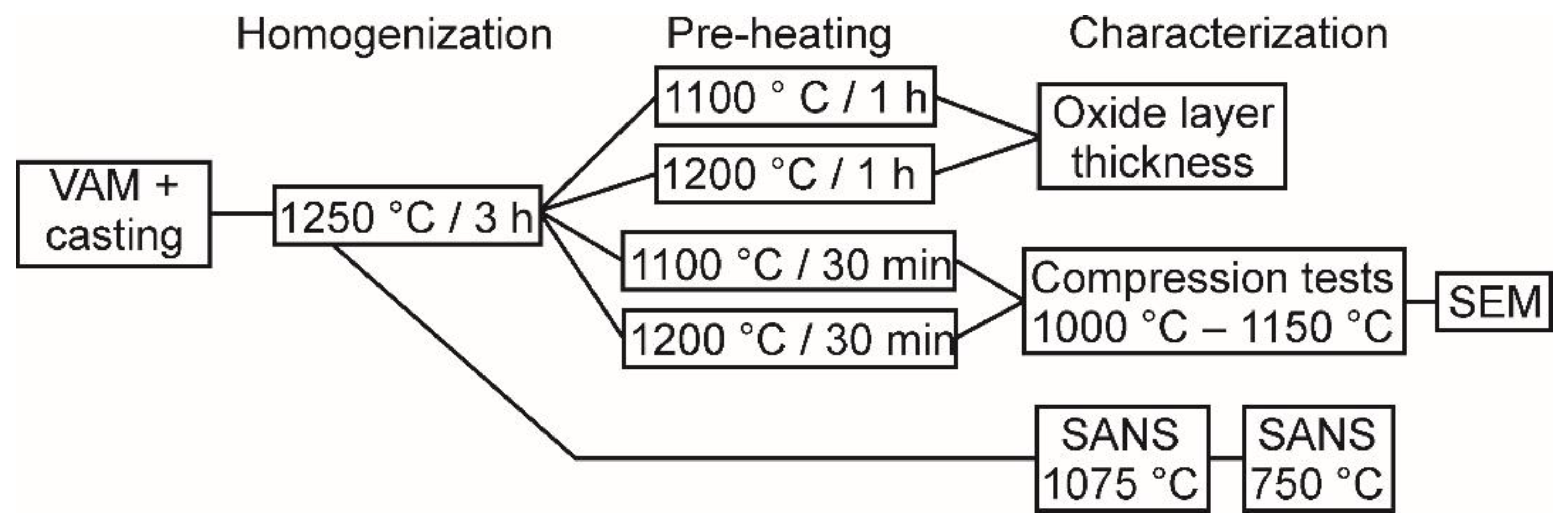
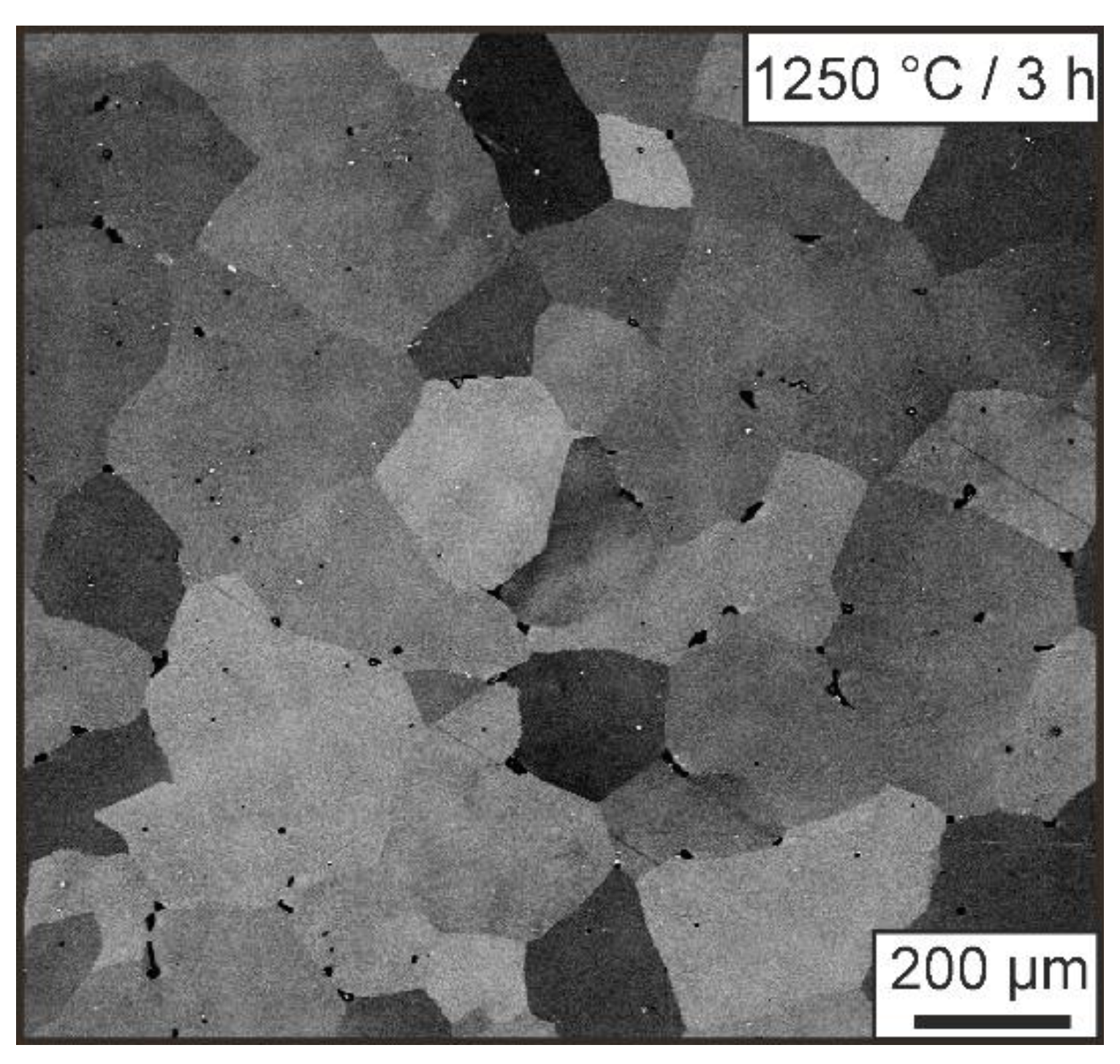
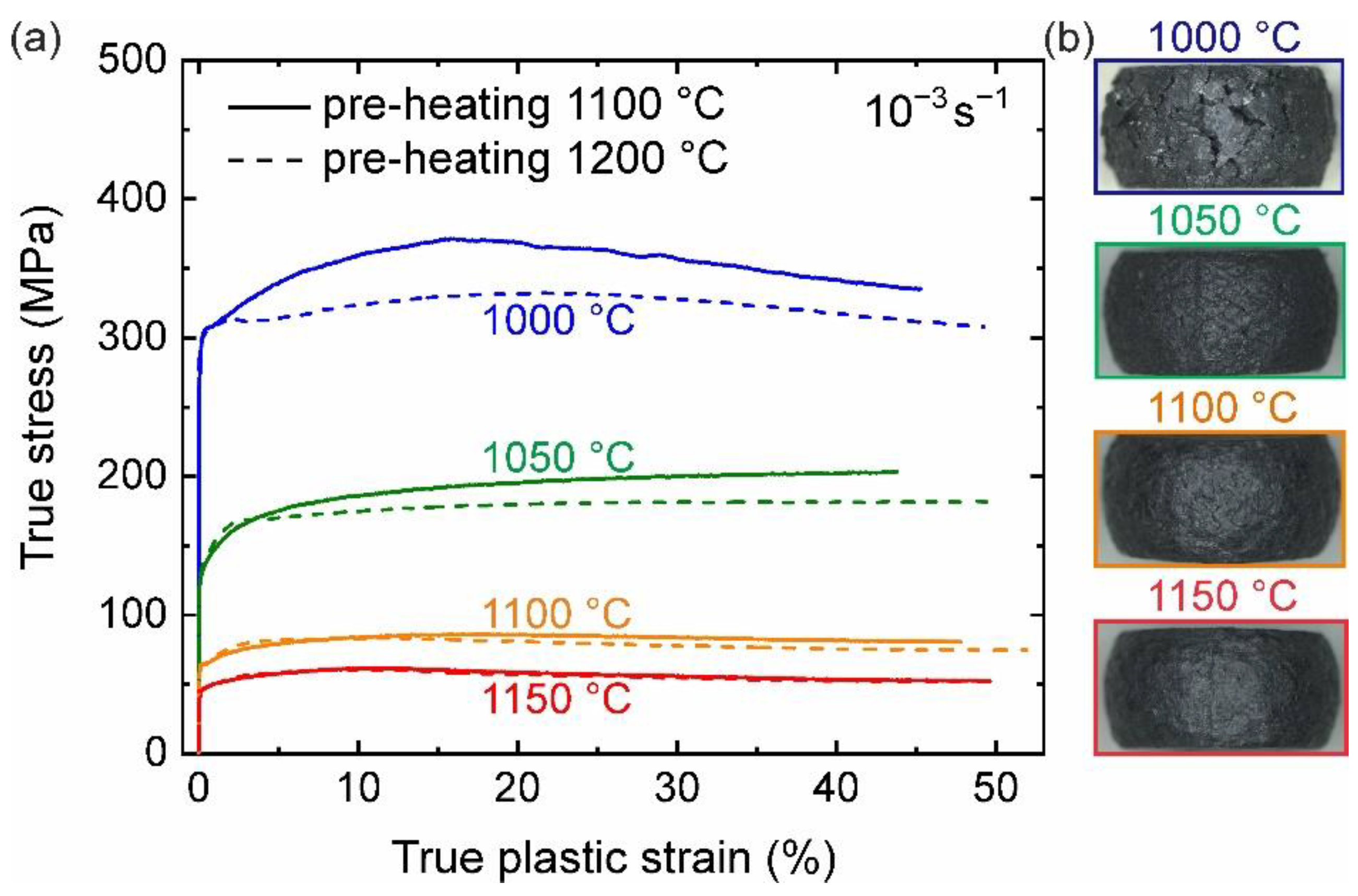
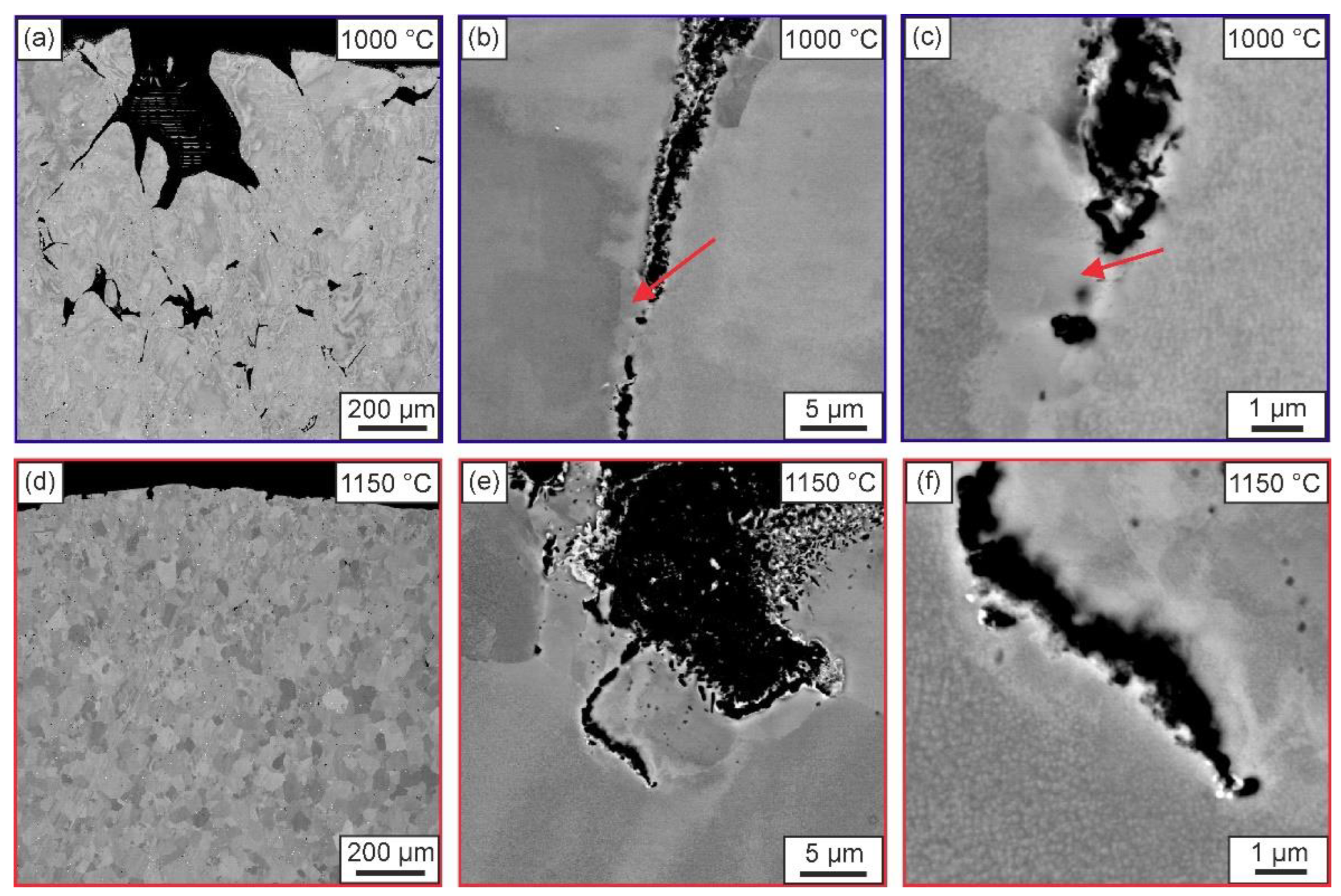
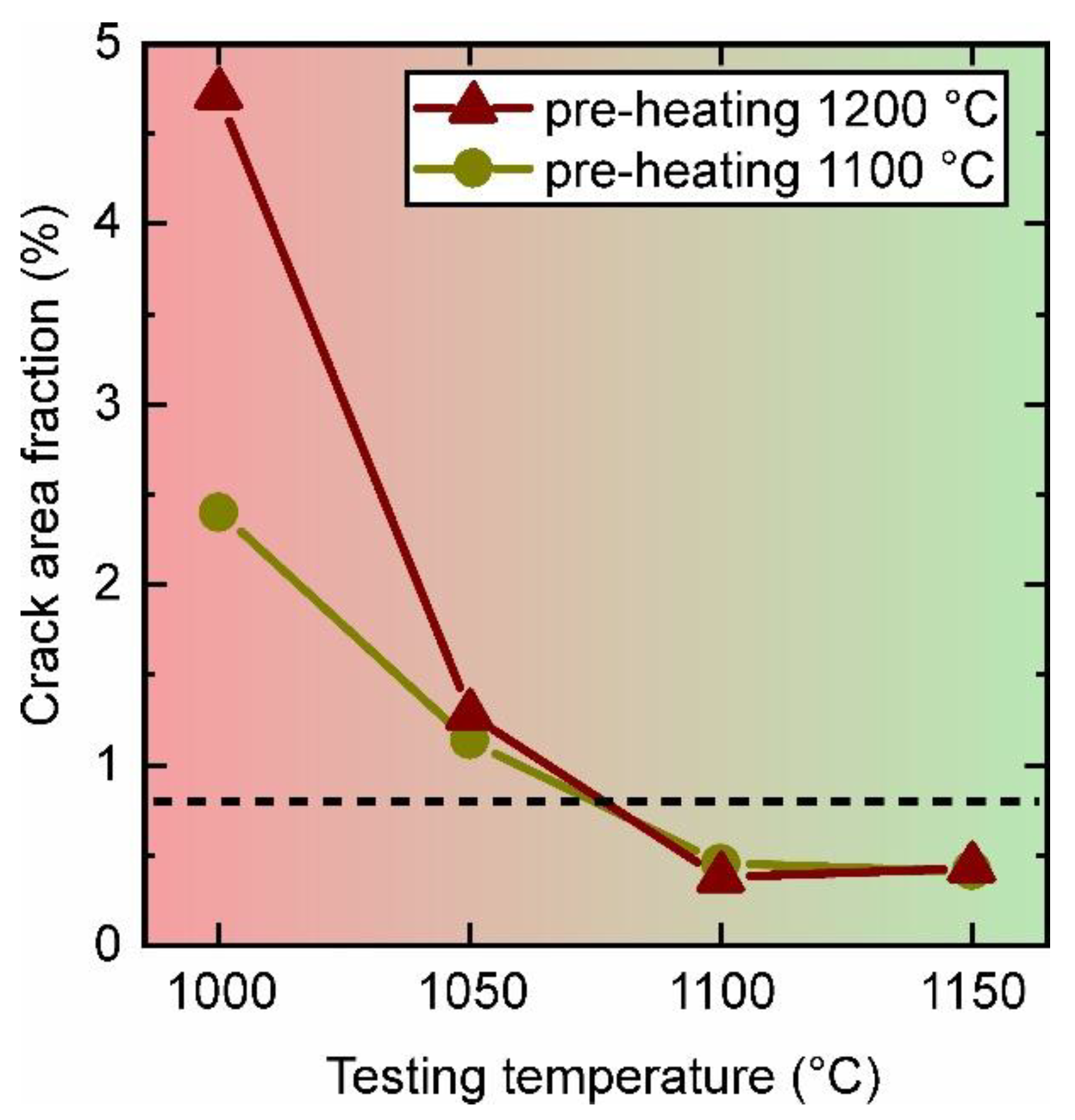
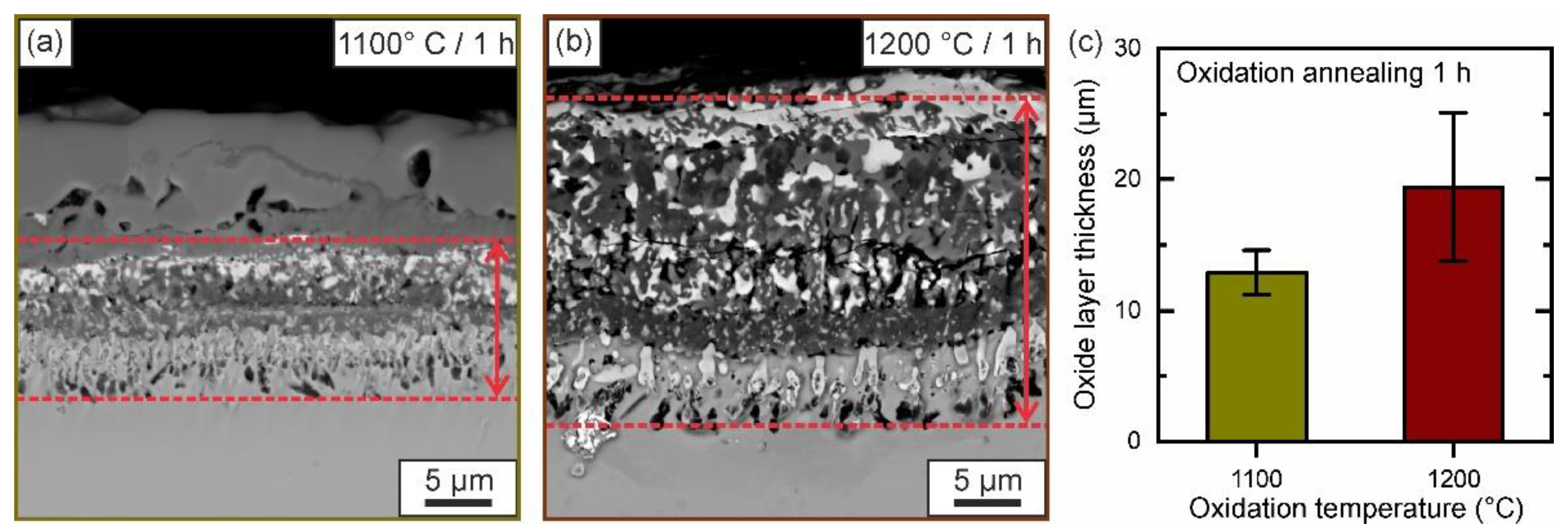
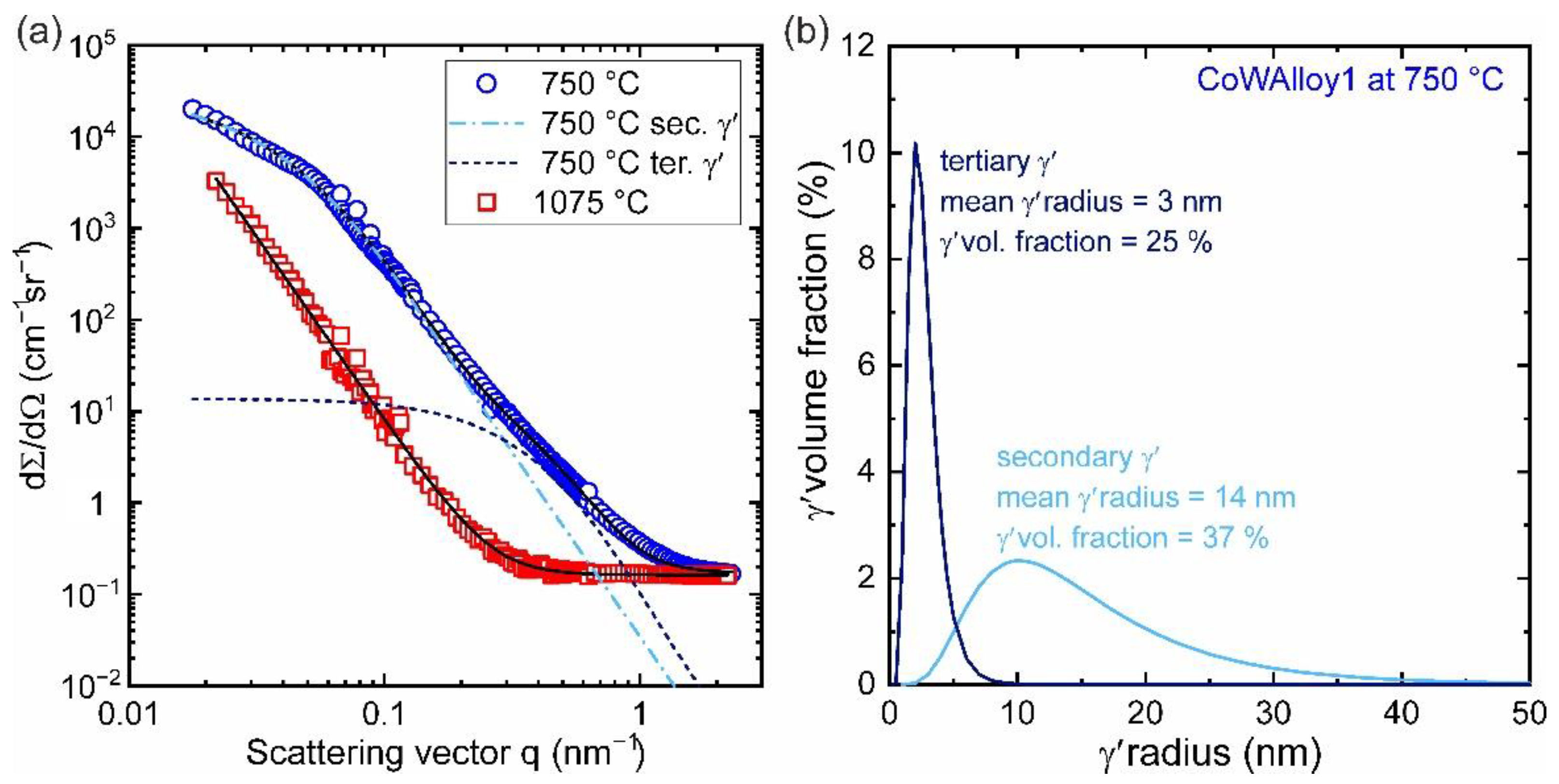
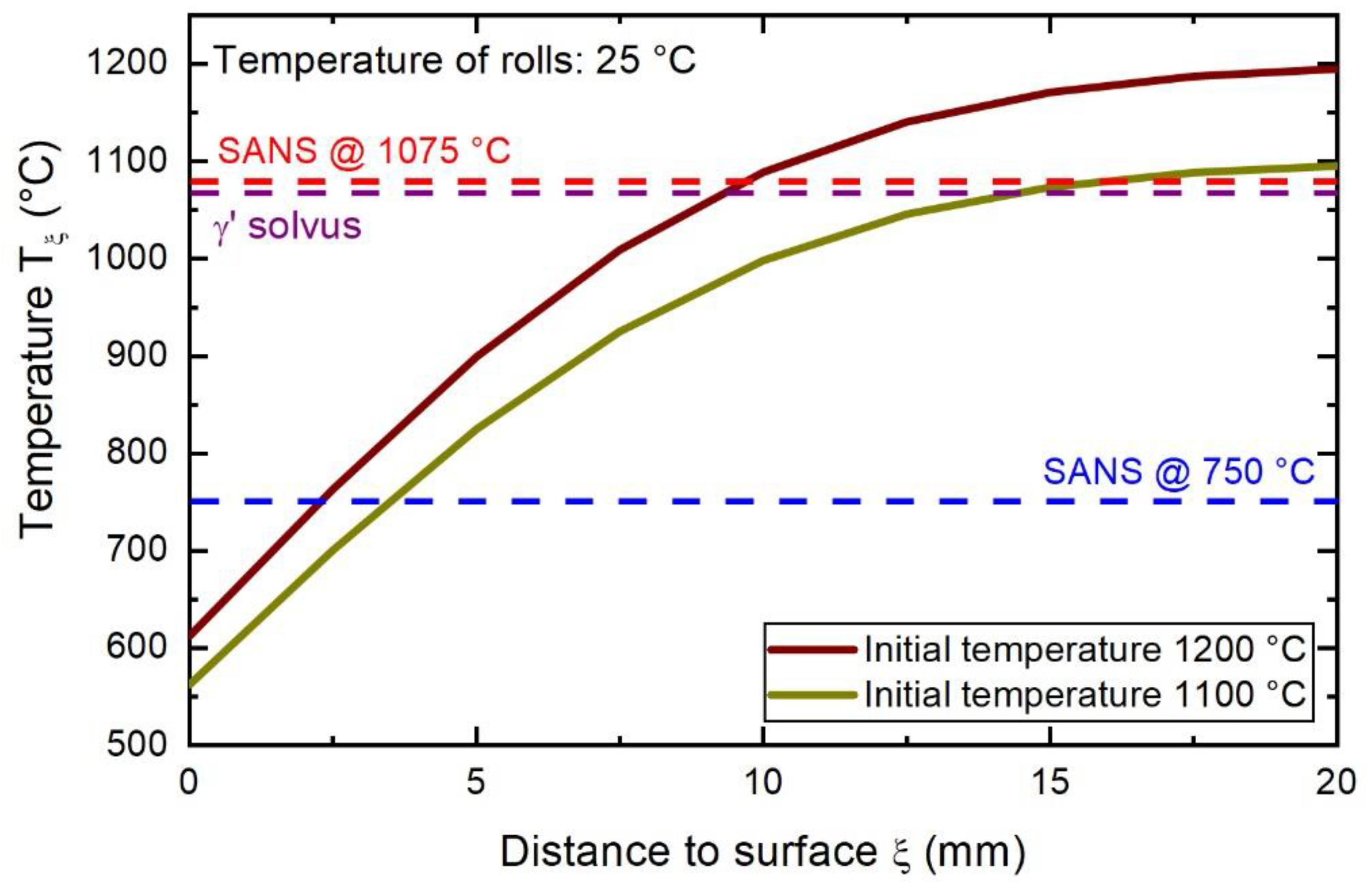
| Element | Co | Ni | Al | W | Ti | Ta | Cr | Si | Hf | Zr | B | C |
|---|---|---|---|---|---|---|---|---|---|---|---|---|
| CoWalloy1 | 42.2 | 32.0 | 6.0 | 3.0 | 2.5 | 1.5 | 12.0 | 0.4 | 0.1 | 0.01 | 0.08 | 0.08 |
| Condition | Secondary γ′ | Tertiary γ′ | Total γ′ | ||||
|---|---|---|---|---|---|---|---|
| r/nm | σ/nm | f/% | r/nm | σ/nm | f/% | f/% | |
| 750 °C | 13.6 | 0.5 | 37 | 2.5 | 0.4 | 25 | 62 |
| Alloy | γ′ Solvus Temperature/°C |
|---|---|
| CoWAlloy1 | 1070 |
| CoWAlloy2 | 1030 |
| CoWAlloy3 | 1006 |
| CoWAlloy6 | 986 |
Publisher’s Note: MDPI stays neutral with regard to jurisdictional claims in published maps and institutional affiliations. |
© 2022 by the authors. Licensee MDPI, Basel, Switzerland. This article is an open access article distributed under the terms and conditions of the Creative Commons Attribution (CC BY) license (https://creativecommons.org/licenses/by/4.0/).
Share and Cite
Hausmann, D.; Freund, L.P.; Solís, C.; Giese, S.; Göken, M.; Gilles, R.; Neumeier, S. Cracking during High-Temperature Deformation of a High-Strength Polycrystalline CoNi-Base Superalloy. Metals 2022, 12, 1520. https://doi.org/10.3390/met12091520
Hausmann D, Freund LP, Solís C, Giese S, Göken M, Gilles R, Neumeier S. Cracking during High-Temperature Deformation of a High-Strength Polycrystalline CoNi-Base Superalloy. Metals. 2022; 12(9):1520. https://doi.org/10.3390/met12091520
Chicago/Turabian StyleHausmann, Daniel, Lisa Patricia Freund, Cecilia Solís, Sven Giese, Mathias Göken, Ralph Gilles, and Steffen Neumeier. 2022. "Cracking during High-Temperature Deformation of a High-Strength Polycrystalline CoNi-Base Superalloy" Metals 12, no. 9: 1520. https://doi.org/10.3390/met12091520
APA StyleHausmann, D., Freund, L. P., Solís, C., Giese, S., Göken, M., Gilles, R., & Neumeier, S. (2022). Cracking during High-Temperature Deformation of a High-Strength Polycrystalline CoNi-Base Superalloy. Metals, 12(9), 1520. https://doi.org/10.3390/met12091520







